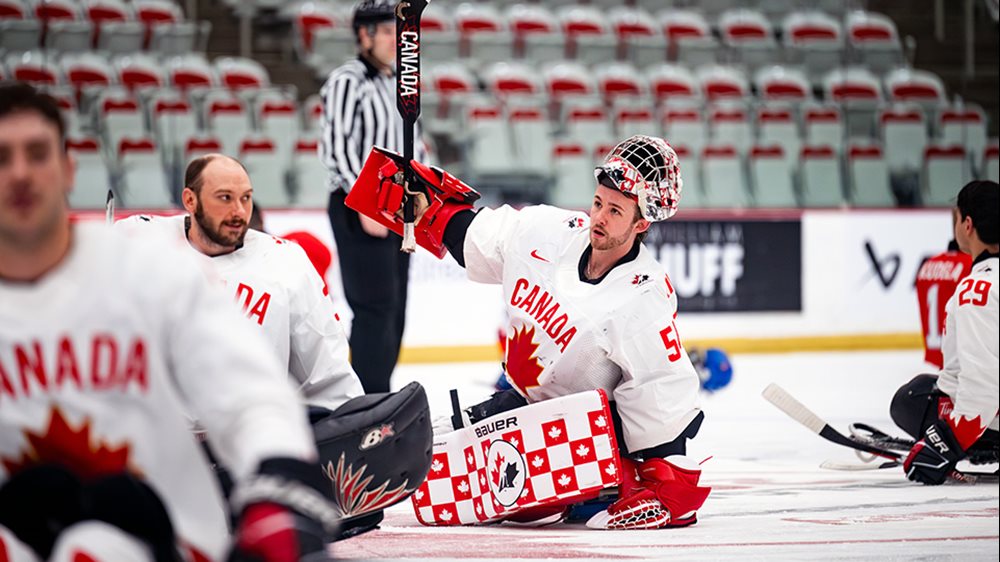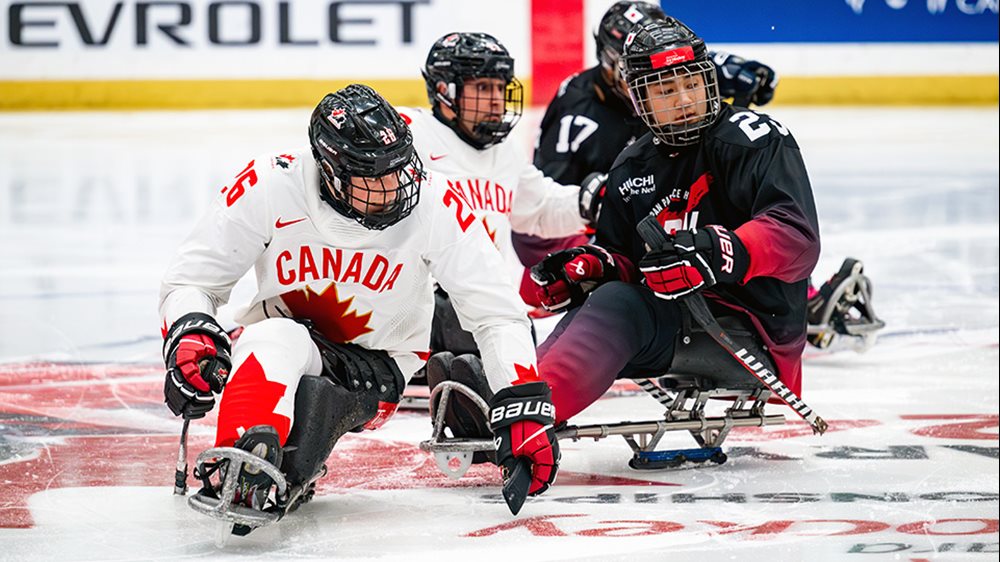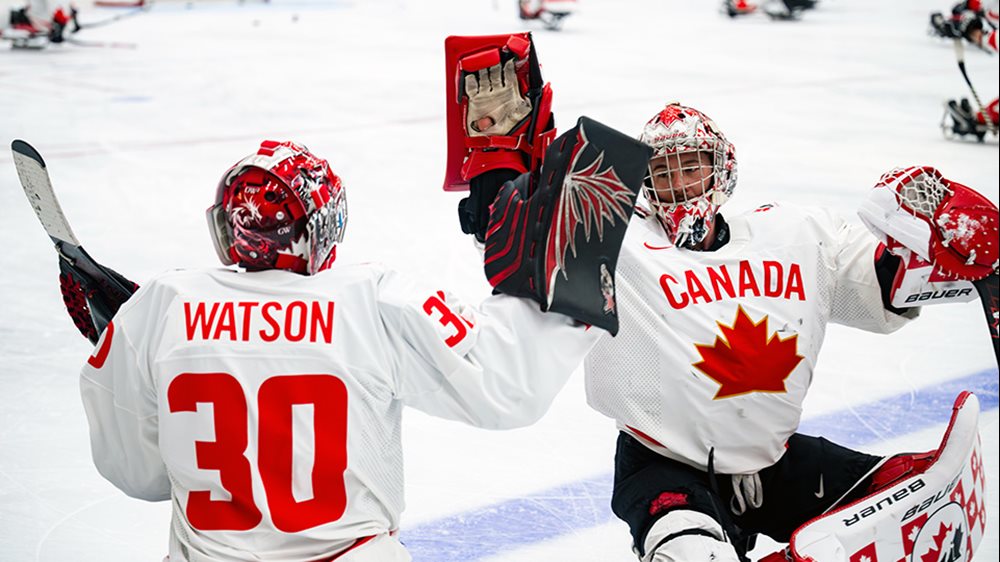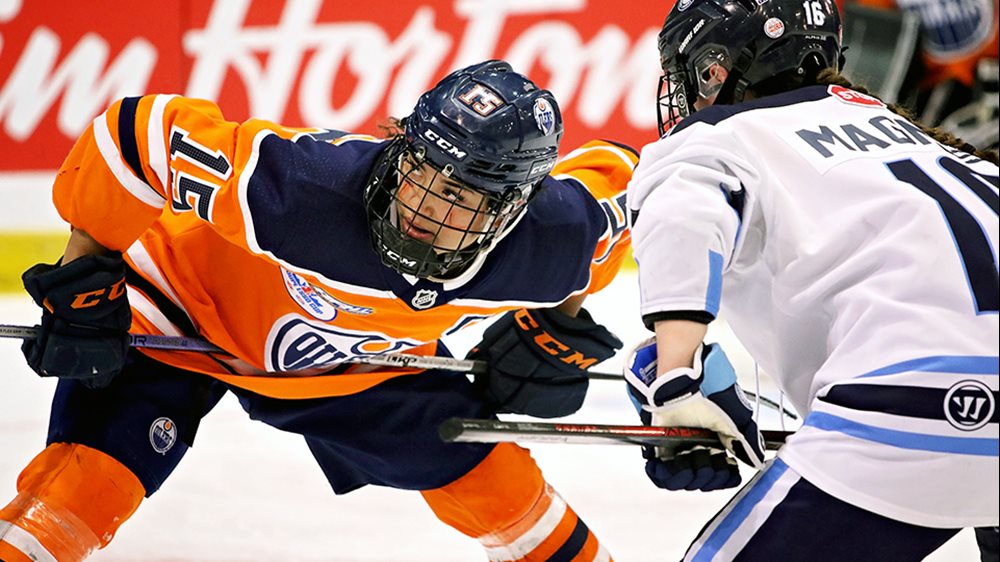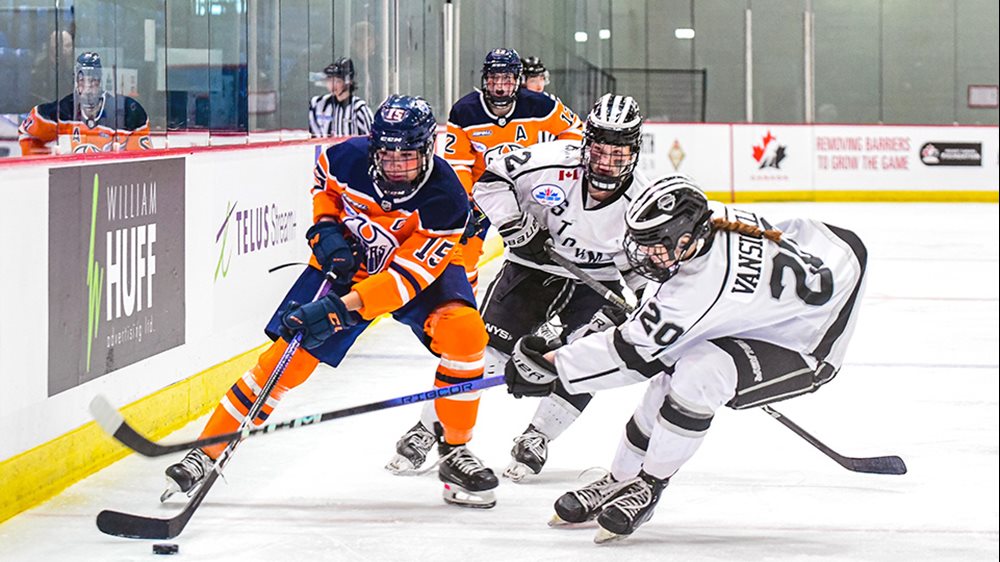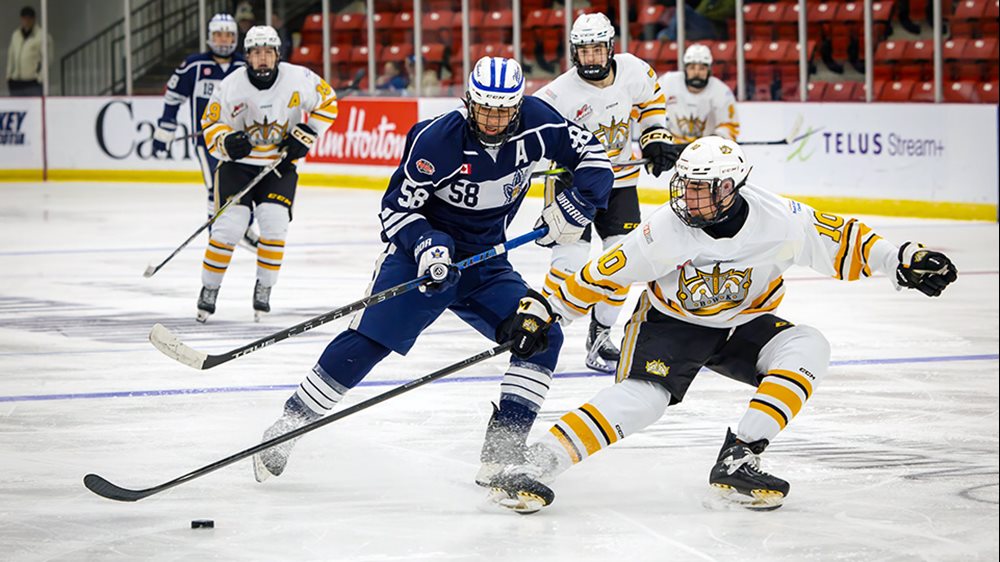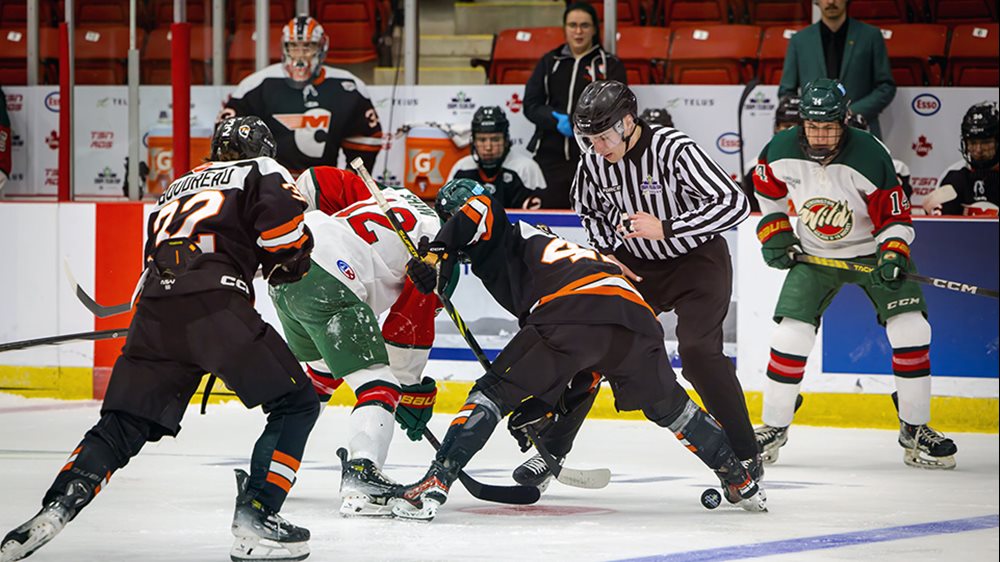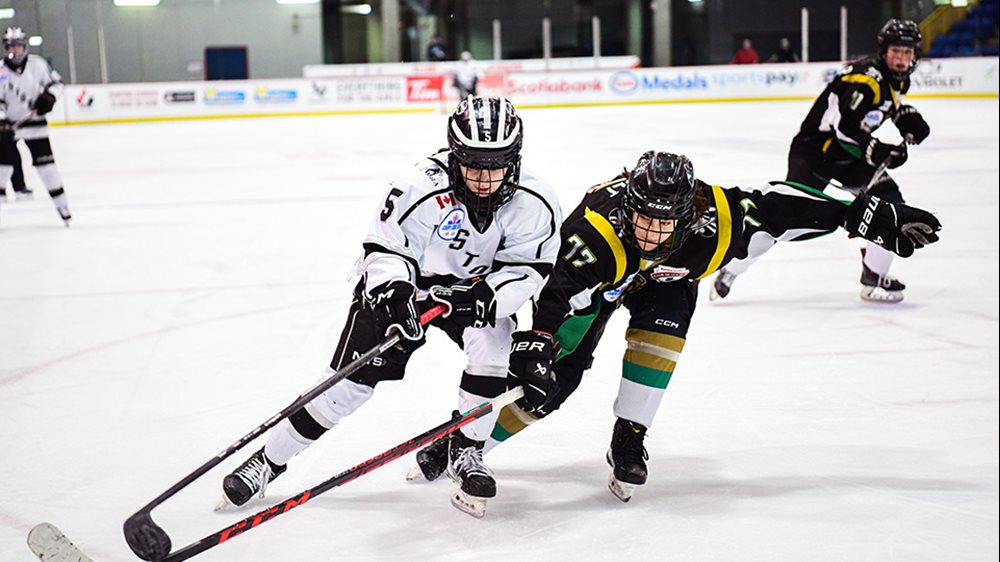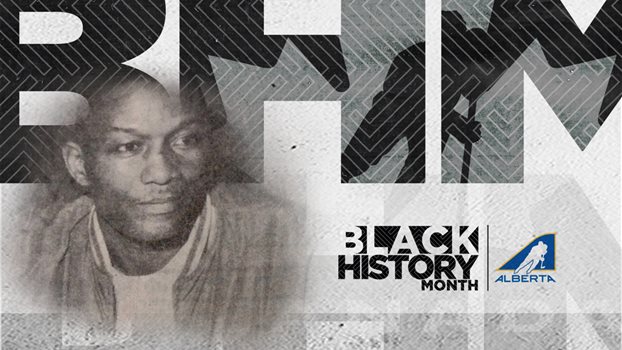
A life dedicated to sport
Whether on the ice, in the ring or on the diamond, as a player, coach or administrator, Tommy Hamilton left a legacy across northwestern Alberta and beyond
Tommy Hamilton was an elite athlete who chose to dedicate his life giving back to his community and ensuring all youth had an opportunity to be involved in sport.
A Black man, born in Texas and raised in Kansas City, Missouri, Hamilton’s athletic talent led him to the Peace Country in the 1950s – first in northwestern Alberta and eventually in northeastern British Columbia.
Hamilton’s athletic career started in boxing and baseball. In the ring, he was an amateur boxing welterweight champion, winning a Golden Gloves tournament in Kansas City. In 1940, Hamilton joined the army, where he won the American Army welterweight championship in 1945.
As a baseball player, Hamilton was reportedly among the best catchers in the game. He suited up for teams across the continent, including the Los Angeles White Sox and the Oakland Beavers. Stops on the playing schedule included Canadian cities from Ontario to B.C.
As Hamilton travelled across Canada, he began to take an interest in the country. While playing in an exhibition series with the Beavers against Alliance Southern Alberta, the manager of the Alliance team extended an invitation to him to play. Without hesitation, Hamilton accepted, and he and his family headed north.
Upon arriving in Alberta, Hamilton continued to play baseball and box. But his focus began to shift as he settled in High Prairie in 1952. There, his new passion flourished – coaching. He coached baseball, boxing and hockey.
Having never strapped on a pair of skates, Hamilton became a student of the game. During his two years in High Prairie, he coached two teams to provincial finals.
In 1957, Hamilton, his wife and six boys moved to Grande Prairie. The move came with changes. He chose to hang up his gloves and focus on training boxers. He played ball for the local men’s team, but the time spent behind the plate had taken its toll and after a year, Hamilton turned to coaching.
His passion for giving back to the sports he loved was unmatched, and his character never wavered – always willing, always present and always smiling. Training and coaching hockey and baseball, he ensured everyone had a spot in the game. Parents were tasked with roles and Hamilton would find a place for the kids who could not play due to health or disabilities.
In an effort to give back, Hamilton sponsored a new club in the Grande Prairie area – the House of Athletics. The club was organized for boys aged 14-20 intended to sponsor sporting activities, including hockey and baseball tournaments.
“I like kids,” Hamilton was quoted in a story in the Grande Prairie Herald Tribune. “Somebody has to help them and I like it, so why not me?”
When he wasn’t training or coaching, Hamilton could be found volunteering in the community, including constructing hockey rinks.
Using his experience as a boxer and baseball player, Hamilton became the trainer for the local senior hockey team, the Grande Prairie Athletics. He was a crowd favourite and often delivered words of advice and encouragement when tending to an injured player.
Hamilton’s contributions to the community did not go unnoticed. In a profile on Hamilton published at Grande Prairie Hockey Legends, Dave Emerson – who knew Hamilton while Emerson was a high school student – talked about Hamilton’s impact.
“Tommy’s activities and the example he set kept us off the streets,” recalled Emerson. “He was one of those few community-minded people who gave freely of his time on evenings and weekends coaching, caring for and organizing sports for kids. Tommy Hamilton was that person. He was all heart, and he gave so much for so many of us young kids in that era.”
Some questioned why Hamilton never received much formal recognition. When the position of athletic director became available, it was thought Hamilton would be a sure fit. But he ended up being passed over for the position.
After 12 years in Grande Prairie, Hamilton’s contributions to recreation and the community were known throughout the Peace Country, and he accepted the athletic director position in Dawson Creek. The Hamilton family moved to Pouce Coupe, and Hamilton continued to give back to the community in Dawson Creek.
In 1973, Hamilton was presented the Earl Johnson Memorial Award as Dawson Creek’s sportsman of the year.
He passed away suddenly in 1980, at the age of 66. The legacy that he left behind has made a lasting impact on recreation in the Peace River country.
For more information on Tommy Hamilton, and the significant impact he had on sports in northwestern Alberta, check out his profile at Grande Prairie Hockey Legends.
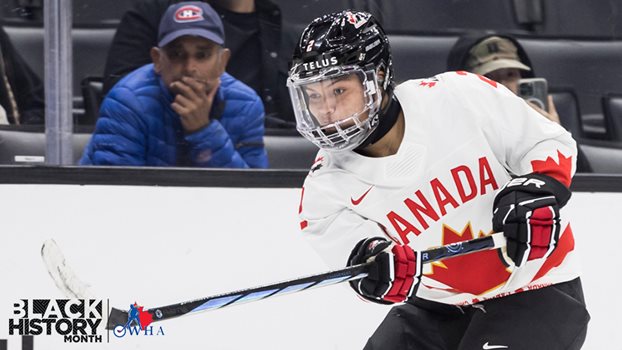
Jaques ready for what comes next
After a decorated academic and athletic career at Ohio State University, Sophie Jaques is using her place in the game – with Team Canada and in the PWHL – to inspire the next generation
Sophie Jaques had plans to pursue a career in civil engineering.
Instead, the 23-year-old finds herself living out her dream as a professional hockey player with PWHL Minnesota.
“It’s been a really exciting time for women’s hockey,” Jaques says. “It’s been great to play alongside the best players in the world and learn from all their experiences.”
Jaques was born in Toronto and grew up in the city's west end, where she developed an early love for hockey.
“I started playing hockey at Rennie Park by my house,” she recalls. “I really liked it, so my parents put me in a learn-to-play program and I fell in love with the game from there.
“I remember always having a smile on my face and enjoying the time with my friends, enjoying hot chocolate and those little things like jumping into the snowbank after the Zamboni came off the ice.”
While attending Silverthorn Collegiate in Etobicoke, Jaques played three seasons with the Toronto Aeros of the Provincial Women's Hockey League — now called the Ontario Women's Hockey League — winning league championships in 2016 and 2018.
Jaques recalls spending countless hours working on her game throughout her early years.
“I went to a lot of shooting clinics when I was younger, working on my shot in the backyard, and I think that helped take my shot to the next level and [it is] something I continue to use every time I step on the ice now.”
That level of commitment is what helped set Jaques apart, whether it was hockey or academics — something that became extremely evident in her five seasons at Ohio State University.
[Photo or social media post goes here]
Making history at OSU
Jaques’ teammates and coaches in Columbus describe her as an easygoing and brilliant student-athlete, but it was on the ice where her character and strength shone through with the Buckeyes.
“Things come naturally for Sophie,” says Nadine Muzerall, women’s hockey head coach at Ohio State. “Seeing her maturity grow over the years, her confidence was a big piece of that growth, and finding success on the ice, she became a leader.”
As a rookie in 2018-19, she led all OSU rookies with 21 points (6-15—21) before topping that with 24 points (9-15—24) as a sophomore.
After posting just two goals and four points in 20 games during the COVID-affected 2020-21 season, Jaques exploded as a senior. her 59 points (21-38—59) in 38 games rank as the second-most by a defender in Western Collegiate Hockey Association (WCHA) history and the most in Ohio State history. Her contributions led the Buckeyes to their first NCAA national championship and put the women’s hockey world on notice.
“It finally all just clicked that season,” says Jaques. “I developed more confidence in myself, and it allowed me to play at my best. The next season, I wanted to prove that it wasn’t a one-off season, that it wasn’t a fluke that senior season, and that I could play that way."
Jaques returned for a fifth year and picked up right where she left off. Not only did she earn a fellowship from OSU to fund her final year to complete her master’s degree in civil engineering, Jaques put up another 48 points (24-24—48) in 41 games, becoming the first Black woman and only the 10th Canadian to be awarded the Patty Kazmaier Memorial Award as the best women’s hockey player in the NCAA.
“She’s one of the best defencemen to play college hockey and the fact that she joined before OSU was number one in the country, and she helped build this program, that says a lot about her character and being a builder,” Muzerall says.
Jaques filled her trophy case at Ohio State; in addition to the Kazmaier Award, she was a two-time First Team All-American, two-time WCHA Defender of the Year, WCHA Player of the Year, WCHA Outstanding Student-Athlete and a four-time member of the WCHA All-Academic Team.
In 2022, she won the Arthur Ashe Jr. Female Sport Scholar of the Year, an honour presented to a minority woman who has distinguished herself in her academic and athletic pursuits..
“I’ve coached a lot of people who had success, but I’ve very rarely coached someone as successful as Sophie,” says Muzerall. “In terms of point production as a defenceman, she’s the only person from Ohio State and all its respected programs to win the Arthur Ashe award, and she humbly accepted it. She was receiving national recognition, not just as a hockey player, but as a brilliant student-athlete, and that has never been done before.”
2022 NCAA National Champion. The first Buckeye Kazmaier winner. The first Black Kazmaier winner. Sophie Jaques is a first-mover, who never stands still which is why she is tonight’s Match Ignitor.#Crew96 ✘ @OhioStateWHKY pic.twitter.com/nUBOhmbfff
— The Crew (@ColumbusCrew) April 30, 2023
Reaching out to the community
Jaques’ achievements on and off the ice as a student-athlete only grew the game as her influence and leadership were felt among the young girls and boys in the community.
After finishing her college career last spring, Jaques returned home to Toronto to team up with Saroya Tinker to host the first Black Girl Hockey Club Canada summer camp, sharing her knowledge and experience with the next generation in the community she grew up in.
“At the beginning, it was something that I didn’t really know was happening, but I’m grateful to be in the position where I can inspire others,” Jaques says. “I want to help get more girls into hockey, and hopefully break down more barriers surrounding the game. It’s incredible to know now that I can play a small part in continuing to grow the game.”
Her reach only grew last November when she made her debut for Canada’s National Women’s Team in Los Angeles during the Rivalry Series. “It was an incredibly grateful feeling to represent my country,” Jaques says. “Playing alongside someone like Jocelyn Larocque, who I watched when I was a young girl, and being around all those girls who have been pioneers for the women’s game, to finally get the chance to wear that jersey with that group, was incredible.”
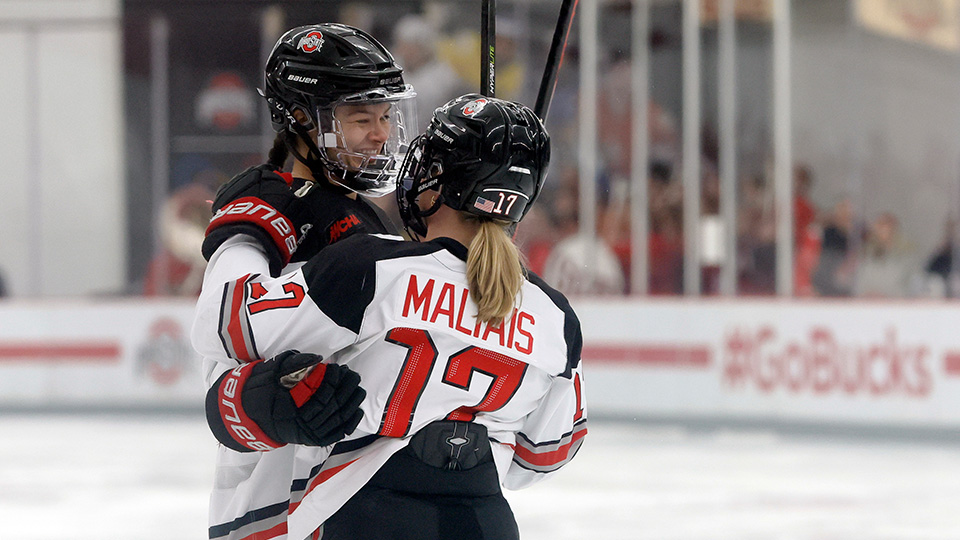 Emma Maltais, who played with Jaques at Ohio State, was more than happy to
welcome her friend to the national team. Before the game, it was Maltais who
handed Jaques her Team Canada jersey.
“Sophie’s been dreaming of that moment for a long time,” says Maltais.
“She’s so humble and for someone who is so good, there’s a calmness to her
while she plays at such a high level. She’s so driven as a person too, in
athletics and academics, and that speaks a lot to her as a person and her
willingness to go the extra mile to find success.”
Emma Maltais, who played with Jaques at Ohio State, was more than happy to
welcome her friend to the national team. Before the game, it was Maltais who
handed Jaques her Team Canada jersey.
“Sophie’s been dreaming of that moment for a long time,” says Maltais.
“She’s so humble and for someone who is so good, there’s a calmness to her
while she plays at such a high level. She’s so driven as a person too, in
athletics and academics, and that speaks a lot to her as a person and her
willingness to go the extra mile to find success.”
Trailblazer once again
After her outstanding college career, Jaques made history by becoming the first-ever Black player and the first Buckeye to be drafted into the PWHL when she was taken 10th overall by Boston — something that wasn’t even an option for her a year ago.
She made history once again earlier this month by being part of the very first PWHL trade when she was dealt to Minnesota.
“I'm really grateful that this year, it is a sustainable league with liveable wages so that I could pursue hockey,” she says. "With the PWHL being here, it helps with the next generation of Black hockey players see representation and show them that it is possible and keep them motivated in their journeys."
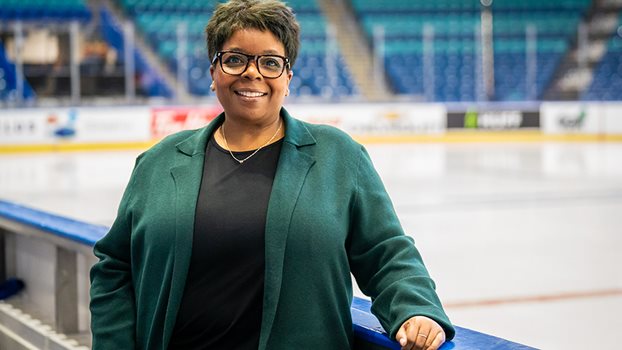
Questions & Answers with Esther Madziya
The Hockey Canada communications manager opens up about her career path, working in sports media as a minority woman and what she’s telling the next generation
If you’re a working media member that has covered Canada’s National Women’s Team over the last four years, you know the name Esther Madziya.
But if you’re not and you don’t, you should.
A Hockey Canada communications manager, Madziya was part of the staff with the Olympic gold medal-winning team at Beijing 2022, sandwiched around a pair of IIHF Women’s World Championship gold medals, spending weeks and months on end in bubbles and quarantines during the COVID-19 pandemic, away from family and friends, with that singular golden goal in mind.
Outside of her Team Canada work, Madziya is an integral part of the Hockey Canada family, and was recognized for her contributions with the Hal Lewis Award as the organization's staff person of the year for the 2018-19 season.
To celebrate National Women and Girls in Sports Day and Black History Month, HockeyCanada.ca sat down with Madziya to talk about her journey and how the industry has evolved for minority women.
HC: How did you get your start in sports media?
EM: I went to SAIT [the Southern Alberta Institute of Technology in Calgary] and took the broadcast journalism program. The program has evolved since then, but it was called CTSR – Cinema, Stage, Television and Radio. And then you could specialize in whatever you wanted to do.
I wasn't sure what I wanted to do at school. Way back when, I wanted to get into accounting, which is not my jam at all, but I always liked sports. And I thought, ‘You know what, maybe I want to get into sports.’ So I took the broadcast program at SAIT, with the hope of getting into sports broadcasting and one day maybe being on TSN.
I ended up getting a job in radio. I did a practicum in Lethbridge, which is my hometown, at the radio station. The station also had the broadcast rights to Lethbridge Hurricanes games, so I was covering the intermission reports and updating scores and stats, and it just evolved from there.
HC: What was the landscape like in sports media for women when you came out of university?
EM: At that the time, there weren't a lot of women in sports. There was also not a lot of diversity, in broadcasting and in sports in particular.
Growing up, my parents always said, ‘No matter what happens, you are going to have to work harder than the next person. You're going to have to prove yourself all the time, because you are a woman and because you are a minority. Nothing's going to come easy for you.’
So that was just something that always stuck with me. And I remember some of my colleagues at SAIT, as we got closer to graduation, saying that it would be easier for me to get a job because I was a woman and a minority, which I didn’t necessarily agree with. But if being a woman and being a minority was going to get my foot in the door, then you know what, I'll accept it. But at the same time, if I can't do my job, it's not going to keep the door open very long.
It was just the reality of, you're going to have to work twice as hard as the next person if you want to have any opportunities. That was just something that always stuck with me.
HC: You’re coming up on nine years with Hockey Canada later this week; what was the career path to get here?
EM: I worked at the radio station in Lethbridge for four years, working the morning show and doing intermission reports with the Hurricanes. I moved into television at Global Lethbridge for a few years, and in 2002 was lucky enough to get a position as a sports reporter at Global Saskatoon. I focused on a lot of university sports, did men's and women's hockey, reporting on those. That was my beat. Canadian Junior Football, I covered the Saskatoon Hilltops. I covered volleyball, curling – learned a lot about curling – covered a lot of SJHL hockey, minor hockey, all that kind of stuff.
In 2010 there were cutbacks, and the industry as a whole was changing, so I decided to go home to Lethbridge. I went back to the radio station, started doing the morning show again, which I never thought I’d do, and was involved with Hurricanes games on both TV and radio.
A year later, the Hurricanes’ communications manager took another job in the Western Hockey League, and the team offered me the position. I was with the team for four years before the Hockey Canada position came open, and I started in February 2015.
HC: You’ve had the opportunity to work with amazing athletes, travel to amazing places, have a front-row seat to Canadian hockey history. What is that like?
EM: Honestly, it's hard to describe, because unless you're in it, you can't even really describe it. But never in my wildest dreams would have imagined that I'd have the opportunities that have come my way. I never would have imagined that I would have gone to some of the places that I've gone, had the opportunity to work with some of the athletes that I've worked with, had the opportunity to cover events, whether it’s from the event side or being embedded with a team.
I think the other piece that makes it special is what it means to my family. My family is incredibly proud of just seeing that this kid who, when she was younger, probably didn't always have the greatest focus on her studies, is doing what she's doing now.
There are times when I’ve hosted a press conference, and my family tells their friends, ‘That's our kid. That's my sister. That's my daughter.’ They're so proud of that, and that means the world to me, but I also know that I've always tried to be really respectful and try to work hard, and do right by the Madziya name. It means a lot to them, just as much as it means to me.
HC: You’ve mentioned your family a few times, and the influence they’ve had on you. How important has that support system been as you’ve progressed through your career?
EM: No matter what I wanted to do with my life, they've always just been in my corner. And I think for any kid to have their parents say, ‘We're so proud of you, no matter what you do. We see the work that you do,’ it's a cool thing.
Our last name is Madziya. We're the only Madziya family here in Canada, and they're really proud of that. Their support just means a lot, because they've always been there. My mom always says, ‘Look at the opportunities that you've been given, look at the jobs that you've had, and appreciate that. And even though there might be some hard times along the way, those hard times strengthen you and they're the reason that you keep having the opportunities that come your way.’
HC: To be one of the faces of Team Canada with national and international media… does that carry a little more weight, mean a little more, because you’re a minority woman?
EM: Absolutely, because there still is a little bit of, ‘Do I really belong here?’ In the back of my mind, there is still that little bit of… watch how you walk, watch how you carry yourself, watch how you're dealing with somebody, watch how you're dealing with other media, because if you offend somebody, it’s pretty easy to say, ‘Well, it was her.’
In the back of my mind, I'm always still thinking about working twice as hard. I just don't want to make any missteps, because I feel like somebody is just waiting for me to make a mistake to say, ‘See, that person can't do it. She's not qualified. She was just a token hire.’
Those things still play in the back of my mind. I don't think those things will ever not play in the back of my mind.
HC: Women’s hockey has grown by leaps and bounds in recent years, and you’ve been able to see it up close. What has that been like to watch the game evolve?
EM: It’s pretty cool to see, because there's a lot of hard work that's gone into growing the game, and you see how passionate the athletes are, but you also see how passionate the staff is. So seeing where it's at and seeing so many people work so hard, that brings me a lot of joy, because they had their dreams when they were a little girl. And to see where things are at and to see the things that they've been able to do and accomplish, but to also get a front row seat to it, is pretty cool.
And I think one of the neatest things for me is that because I've been here nine years and have worked up and down the National Women’s Program, and at national events like the National Women’s Under-18 Championship, I’ve been able to see players from 16, 17, 18 years old through to the national team, and see the difference they’re making now. It’s pretty cool to see that progression – as hockey players and as women.
HC: Throughout your career in the media industry, how have you seen the doors open for women, and for minorities?
EM: It's like night and day. The industry has changed for the better. There are more opportunities, more doors opening up today. I think a lot of organizations have looked at their product and asked, ‘Is our TV program, is our news program, is our sports program indicative of what the rest of Canada looks like?’ Because it has to, otherwise you're not going to connect with people and you're going to lose them.
There are so many different avenues today. There are podcasts and influencers and so many other things that people are doing on their own. You're seeing a lot more women in different roles. And we're seeing a lot more of that because it's about hiring the best person that's out there.
HC: What advice do you have for women, or minorities, that want to get into sports but maybe don't feel like they have a path?
EM: If that's what you want to do, pursue it. Don't let anybody stop you. Somebody may say no, a door may close, but it's not no forever, and there's going to be another opportunity. Obviously if somebody says no, it cuts deep, but it just means not right now. Know that you belong there just as much as the next person. At the end of the day, everybody puts their pants on the same way.
So, pursue what you want to do. Don't take no for an answer, do your research, be confident and go in knowing that you know that you can do the job. Treat people with respect, and you'll hopefully get that respect back. Nobody should ever tell you that you don't belong.

Spotlighting the game’s rising stars
Celebrating the next generation of Black Canadians who are succeeding in the hockey world thanks to their talent, dedication and love of the game
From coast to coast to coast, there are plenty of talented athletes who are part of the next generation in the hockey world.
As part of Black History Month, let’s look at some of the young Black athletes who are making strides at the national and international levels.
Megan Duplantie (Laval, Quebec)
Duplantie began playing hockey when she was four years old. After playing up to U9 girls’ hockey, she switched to playing with boys with the Laval Patriotes at U11.With her talent shining in men’s hockey, she received an offer to go south and play for the Kent School in Connecticut.
Now 17, Duplantie was excited to make the Team Quebec roster for the Canada Winter Games, but unfortunately an injury will prevent her from taking the ice in Prince Edward Island.
Evan Elliott (Whitby, Ontario)
A member of the Whitby U16 AAA Wildcats, Elliott will represent Ontario at the 2023 Canada Winter Games. Through 32 games this season, Elliott has shown his offensive talents, registering 18 goals and 21 assists.
In Prince Edward Island, Elliott recorded two goals during preliminary-round play and added an assist in a quarterfinal win over New Brunswick.
Maasilan Etchart (Ottawa, Ontario)
Etchart has worked his way through the Rockland Nationals program, making his debut this season in the Central Canada Hockey League. As a 15-year-old defenceman, he has recorded six goals and 12 points in 32 games with the U18 AAA Nationals this season.
Etchart has played a big role on the Ontario blue line at the 2023 Canada Winter Games, scoring his first goal of the tournament in the quarterfinals.
A RIP FROM ETCHART 2007 born Ottawa, ON native Maasilan Etchart with a perfect shot from the high slot as he scores his 6th of the season for the @RocklandNatsU18 pic.twitter.com/XPwLJvgJIO
— HEO U18 AAA (@HEOU18AAA) January 30, 2023
Jade Iginla (Lake Country, B.C.)
Iginla continues to make her way up the ranks of Canada’s National Women’s Team. The daughter of Hockey Hall of Famer Jarome Iginla, Jade is showing she is creating a path of her own, helping Canada’s National Women’s Under-18 Team win gold at the 2022 IIHF U18 Women’s World Championship.
After missing the preliminary round due to injury at the U18 women’s worlds, Jade made her Team Canada debut in the quarterfinals. She recorded a goal and two assists in three games.
The RHA Kelowna alumna is in her first season with Brown University, leading the team as a freshman with 15 goals and 21 points.
.@jadeiginla snipe to get 🇨🇦 started!#U18Worlds | @IIHFHockey pic.twitter.com/022rN59DAf
— Hockey Canada (@HockeyCanada) June 12, 2022
Tij Iginla (Lake Country, B.C.)
Similar to his older sister, Iginla officially made his Team Canada debut in 2022, suiting up for Canada Red at the World Under-17 Hockey Challenge. Tallying two goals and five assists in seven games, Iginla helped Canada Red earn a silver medal.
Currently in his rookie season with the Seattle Thunderbirds of the WHL, the 16-year-old centre has scored three goals, adding 11 assists through 39 games. He will be eligible for the 2024 NHL Draft.
Iginla off the rush! Tij opens the scoring for the @SeattleTbirds. pic.twitter.com/iVBpTpLwQF
— The WHL (@TheWHL) January 22, 2023
Cayden Lindstrom (Chetwynd, B.C.)
After getting a six-game stint in the WHL during the 2021-22 season, Lindstrom has settled into his role in his rookie season with the Medicine Hat Tigers.
Sitting seventh in Tigers scoring with 14 goals and 30 points in 45 games, Lindstrom was a late addition to the Canada White roster at the 2022 World Under-17 Hockey Challenge. But he didn’t miss a step when the tournament began, scoring four goals and adding two assists in six games.
Forget speed of sound, this Cayden Lindstrom shot reached the speed of light.@tigershockey pic.twitter.com/T5uVKzCYH2
— The WHL (@TheWHL) December 17, 2022
Jordan Martin (Abbotsford, B.C.)
Martin wanted to be just like his brother Jayden growing up, so he followed in his footsteps and began playing hockey when he was three years old. Jayden played for Yale Hockey Academy before joining the Mission City Outlaws. Now 16-year-old Jordan is making his mark with Yale in his hometown.
This season, the defenceman has registered two goals and 13 points in 25 games with the U18 prep team. The 41st overall pick by the Saskatoon Blades in the 2022 WHL Prospects Draft, Martin has recorded one assist so far with Team B.C. at the Canada Winter Games.
Harry Nansi (Nepean, Ontario)
Nansi was at a public skate when he was six years old when he saw a hockey team practice on another rink, and he was inspired to try the game. Now, the 15-year-old is putting up some noteworthy numbers.
In the 2021-22 season, Nansi tallied 15 goals and 45 points in 25 regular-season games with the Ottawa Myers Automotive U15 AAA team. He is making waves with the Nepean U18 AAA Raiders this season, registering 21 goals and 47 points over 34 games, and has skated in two games for Team Ontario at the Canada Winter Games. Nansi says his role model is Anthony Duclair because “not only is he a person of colour, he is very humble, hardworking and when he is on the ice, he is relentless.”
WOW!! 🤯 What a game for Harry Nansi! (via @RaidersU18AAA) pic.twitter.com/Vvu52PISdU
— NHL (@NHL) September 29, 2022
Jaeden Nelson (Vaughan, Ontario)
Nelson had a fantastic season last year with the Ottawa Myers Automotive U15 AAA team. In 14 regular-season appearances, he boasted a 1.19 goals-against average, seven shutouts and a 10-2-2 record. In the playoffs, he continued to be lights-out with a 5-0 record, one shutout and a 1.20 GAA over five games.
The Toronto Marlboros goaltender is one of two netminders backstopping Team Ontario at the 2023 Canada Winter Games. The 15-year-old made 29 saves on 32 shots in an overtime loss to Alberta during the preliminary round, and allowed two goals on 25 shots in a quarterfinal win over New Brunswick.
Highlights of @TorontoMarlboro goaltender Jaeden Nelson from the Toronto Titans U16 Early Bird Prospect Tournament this past weekend. Check out these tremendous saves made him during the event!! #OHLDraft #2023OHLDraft pic.twitter.com/eIvvLNyAN8
— Pinnacle Hockey Management (@_pinnaclehockey) October 6, 2022
Aaron Obobaifo (Calgary, Alberta)
The future is bright for Obobaifo, who suited up for Team Alberta this month at the Canada Winter Games. Last season, the Calgary native had a fantastic year with the Shattuck-St. Mary’s U14 AAA team in Minnesota, recording 44 goals and 91 points in 52 games.
That performance caught the eyes of the Vancouver Giants, who drafted Obobaifo 19th overall in the 2022 WHL Prospects Draft. Giants head scout Terry Bonner says the 16-year-old is “a strong skater, competitive, has good hands and great finish around the net.” This season, the forward has 34 goals and 21 assists in 43 games with the U15 AAA team at Shattuck. Obobaifo has registered one goal and two assists so far at the Canada Winter Games, helping Team Alberta to the quarterfinals.
Cameron Schmidt (Prince George, B.C.)
Schmidt comes to Team B.C. with two WHL games under his belt. The forward made his WHL debut with Vancouver – who selected him seventh in the 2022 WHL Prospects Draft – on Jan. 6, scoring his first WHL goal to help the Giants defeat the Tri-City Americans 3-2.
The 16-year-old has 11 goals and 19 points in 12 games with RHA Kelowna this season. He has two goals and six points so far at the Canada Winter Games.
We’ve got a rookie lap for 7th overall pick Cameron Schmidt! pic.twitter.com/51n3THbVW4
— Vancouver Giants (@WHLGiants) January 7, 2023
Malcolm Spence (Mississauga, Ontario)
After posting 56 points in 28 games in his final season with the Mississauga Senators, Spence was drafted second overall in the 2022 OHL Priority Selection. In his first season with the Erie Otters, he’s tallied 12 goals and 16 assists, ranking him in the top-10 in points among rookies in the OHL.
His talents led to him being selected to represent Canada Black at the 2022 World U17 Hockey Challenge, where he registered an assist in two games on the international stage before an injury prematurely ended his tournament.
WHAT A GOAL FROM MALCOLM SPENCE 😱 The second-overall pick strips the defender of the puck and dekes around the goaltender to bring the @ErieOtters within one 🎥 pic.twitter.com/61uj5qE6vP
— OntarioHockeyLeague (@OHLHockey) January 13, 2023
Nathan Watson (Mascouche, Quebec)
Watching the Montreal Canadiens on TV was what inspired Watson to begin playing hockey at four years old. Eleven years later, the Mascouche, Que., native has recorded three assists for his province so far at the Canada Winter Games.
Watson currently attends Cardigan Mountain School in New Hampshire, where he was named team MVP this season. Outside of hockey, the 15-year-old was voted as the all-school leader by the Cardigan community for the 2022-23 school year.
Bill Zonnon (Montreal, Quebec)
Zonnon is quickly drawing the attention of the hockey world in the QMJHL. Drafted sixth overall in the 2022 QMJHL Entry Draft, Zonnon got straight to work. He recorded points in seven consecutive games, five goals and seven assists, before being named rookie of the month for September and October. The 16-year-old has 15 goals and 17 assists this season, ranking him seventh in points on the Rouyn-Noranda Huskies and ninth among QMJHL rookies.
Suiting up for Canada White at the 2022 World Under-17 Hockey Challenge, alongside Lindstrom, the left winger played in six games, scoring one goal and adding two assists.
Le festin offensif se poursuit! Bill Zonnon inscrit son 2e du match ! C'est notre 6e but de la 2e période! RN 6 DRU 0#LHJMQ pic.twitter.com/OcMTRmEnua
— Huskies de Rouyn-Noranda (@HuskiesRn) January 21, 2023
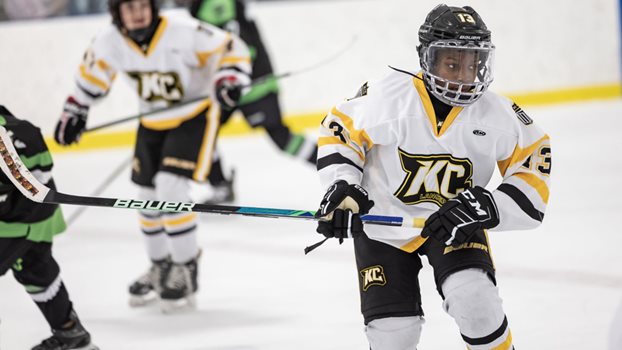
Assist Fund in Action: Brismoh Mansaray
With help from the Hockey Canada Foundation Assist Fund, the 12-year-old is flourishing in his first year of U13 AA hockey in Edmonton
When Brismoh Mansaray was five years old, he asked his dad a simple question.
“I was watching hockey with my dad when I asked him if I could play hockey, and he said sure,” recalls the Edmonton native, now 12.
Brismoh’s parents did what many do and first enrolled him — along with his sister — in skating lessons.
“We wanted him to just skate as a recreational activity,” recalls Brismoh’s mom, Iyesatu Jalloh. “But when he was skating, the coaches recommended registering him for hockey and told us how to do it.
Iyesatu says while she knew her son wanted to play hockey, she had her reservations and was hesitant to sign him up in a league.
“At one point, I tried to convince him to play soccer instead of hockey because it was too cold,” she says. “But then he cried the whole time he was at daycare, so the daycare teacher told me, ‘Please just let this boy play hockey.’”
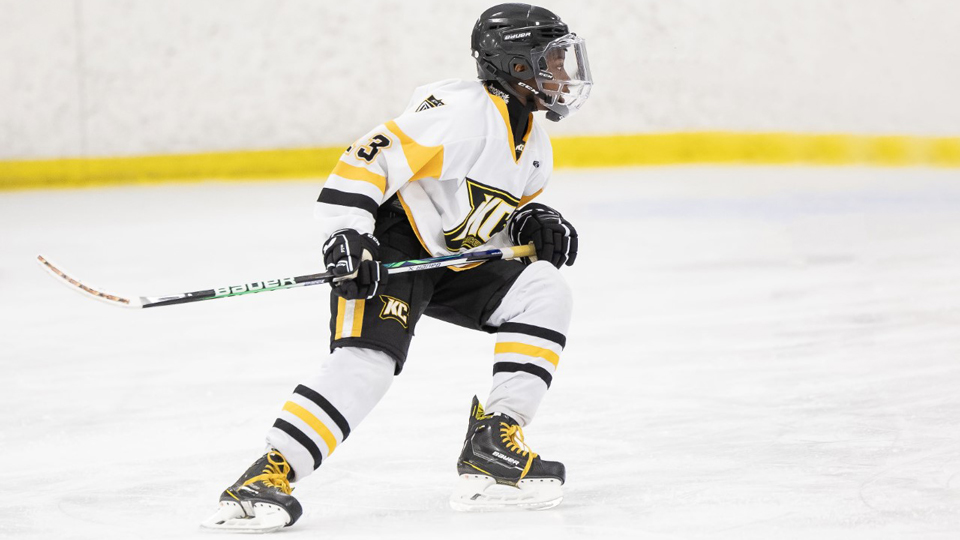
Brismoh's father suggested playing hockey might be beneficial for their son in more ways than one.
"His dad said, 'Let's just try it and maybe he will like it and maybe it will help him focus and he will not be on electronics all the time,' and I said OK," recalls Iyesatu.
So, in 2016, Brismoh was enrolled in Timbits U7 hockey. A year later, he joined the house league program with the KC Hockey Club, run by the Knights of Columbus Athletic Club in Edmonton, where he started out as a defenceman before becoming a forward.
“I was always rushing a lot,” says Brismoh, who is a big Edmonton Oilers fan and dreams of making it to the NHL someday.
Today, the right-winger is in his first full season of rep hockey as a member of the KC U13 AA Lancers.
“The best thing about playing hockey is that it is fun, and it gives me a hobby that I always want to do. I meet and make new friends every season,” Brismoh says.
Brismoh currently sits third on the team in scoring with 26 points and tied for third with 10 goals on the season. He is also excelling in school, much to the delight of his mother.
"He's doing good in hockey and he's doing good in school. His grades are in the 90s and he is doing good at home,” says Iyesatu.
With all the games, practices and high expectations that come with playing hockey, especially as a member of a rep team, Brismoh says it has all helped him stay focused not just on the ice, but off it too.
“Hockey has taught me how to focus on certain areas,” he says. “I don’t have a lot of time for anything else because of after hockey practice I have to study and then go to bed.”
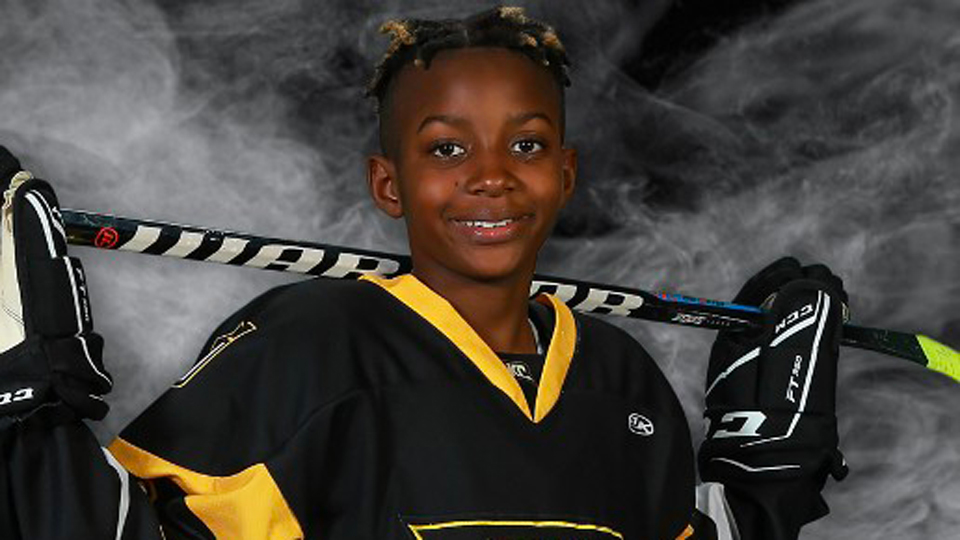
A helping hand
Brismoh was born in Edmonton, but his parents immigrated to Canada more than 20 years ago from Sierra Leone, where hockey, particularly the frozen kind, is virtually non-existent.
“We don’t do hockey back home,” says Iyesatu. “Sierra Leone, it’s mostly just soccer, track and field, basketball … because it’s like always 30 degrees and above.”
Though they had watched hockey before, they weren't completely familiar with everything that accompanies playing the game such as the equipment that is needed, or even how to put it on.
“We didn’t even know how to put the gear on him. We had to go on YouTube to see how to dress him up. It was really hard,” recalls Iyesatu, later adding. “The parents had to teach me how to tie his skates.”
To help Brismoh continue to make strides in the game, his family has turned to programs such as Hockey Canada Foundation Assist Fund, which provides $500 subsidies to help parents cover registration fees.
"The Assist Fund was really good for me because this year with AA, it was really expensive. I was really worried ... so when I got [help from] the Assist Fund, I was so happy," says Iyesatu.
Despite her initial hesitation towards her son playing hockey, Iyesatu says she is very proud of Brismoh’s success on and off the ice and is thrilled to see him playing the game he loves.
“I am so happy,” she says.
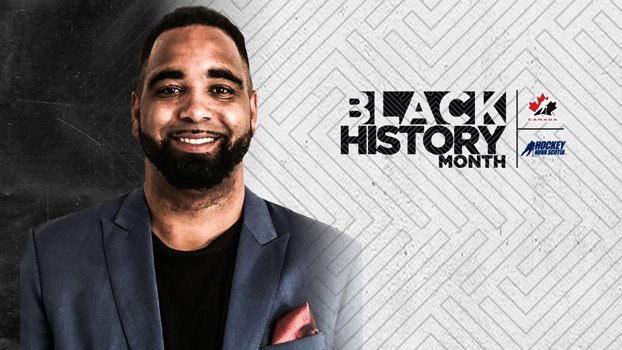
"If not now, then when?"
Inspired by hockey’s racial reckoning and last year’s social justice “awakening,” Rane Carnegie is carrying on his family’s legacy and working to get his trailblazing grandfather into the Hockey Hall of Fame
NOTE: This story was first published in February 2021. It has been updated with current information.
Rane Carnegie’s trailblazing grandfather is finally a member of the Hockey Hall of Fame.
Herb Carnegie, the founder of Canada’s first hockey school and an Order of Canada appointee, was posthumously inducted into the Hall last November as a builder, joining Roberto Luongo, Daniel Alfredsson, Henrik and Daniel Sedin, and Riikka Sallinen as part of the Class of 2023.
He joined Grant Fuhr, Willie O'Ree, Angela James and Jarome Iginla as the only Black members of the Hockey Hall of Fame.
Honoured to welcome Herb Carnegie, posthumously, to the Hockey Hall of Fame! Herb's children Bernice and Dale are presented with his Honoured Member plaque by Angela James #HHOF10.@CarnegieInit | #HHOF2022 | #HHOF | 📸 Dave Sandford/HHOF pic.twitter.com/BRQx7wrCFz
— Hockey Hall of Fame (@HockeyHallFame) November 15, 2022
“He deserved it,” says Rane. “My grandfather was a very special person, and everyone knew it.”
The induction comes after a renewed effort by the family to see Herb receive hockey’s highest honour. In 2020, Rane launched a petition, which garnered nearly 11,000 signatures, asking the Hockey Hall of Fame selection committee and the NHL to induct his grandfather, who passed away in 2012.
“The amount of people that came together to advocate and promote and share in this journey along way – because it wasn’t just this past year, it’s been a long time coming, and to see the joy and outpouring of love when it happened, it was truly amazing,” says Rane.
Read the original story on the career of Herb Carnegie and Rane’s efforts to have him recognized below.
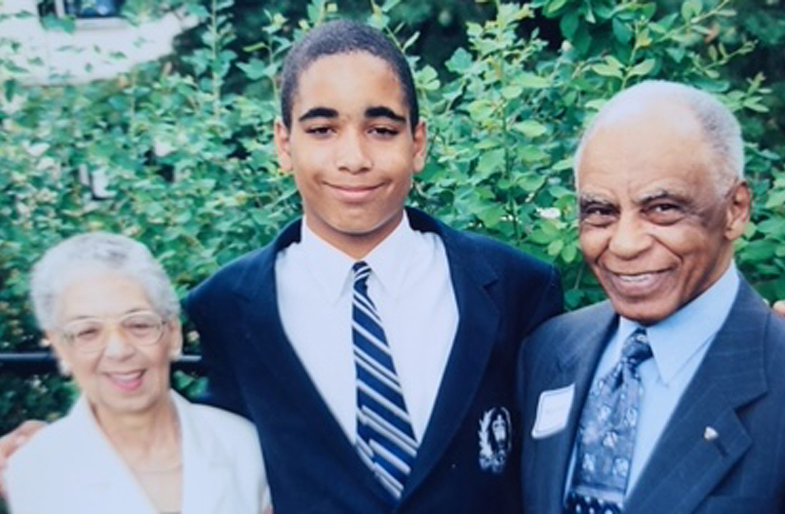
George Floyd.
Breonna Taylor.
Ahmaud Arbery.
Against the backdrop of a global pandemic, these names became rallying calls across North America during the summer of 2020 as the continent confronted centuries of systemic racism.
For Rane Carnegie, so much of the past year has been a call to action.
“It was traumatizing,” the 36-year-old former junior hockey star says.
“I have a Black son and a Black daughter. It impacted my family in a way that I can’t even begin to describe.”
The social justice movement that followed the deaths last year of Black men and women like Floyd, Taylor, and Arbery, took place in the wake of a racial reckoning throughout the game of hockey that was first sparked by Akim Aliu in the fall of 2019.
For Carnegie, the confluence of these movements was, what he calls, an awakening.
“It gave me the strength I needed to realize that I can be a leader and my actions matter,” Carnegie says. “My voice matters.”
“I wasn’t going to sit around and not do anything about it anymore.”
A PASSION FOR THE GAME
Carnegie’s passion for hockey comes honest enough.
His grandfather Herb Carnegie, widely considered to be the game’s first Black star, was a smooth-skating centre and a three-time winner of the Quebec senior league’s most valuable player award during the 1940s.
The son of Jamaican immigrants, he was also the man who showed up with a pair of skates at his grandson’s Toronto doorstep and first introduced him to the sport.
“I fell in love with the game from the moment I stepped foot on the ice with my grandfather.”
Like his grandfather who learned the game on the frozen ponds of north Toronto, it didn’t take long for the younger Carnegie to excel with those skates on.
An emerging hockey star in his own right, he caught the attention of junior hockey scouts early. In 2001, he was a first-round pick of the Ontario Hockey League’s Belleville Bulls.
His own hockey journey would bring him through the OHL and Quebec Major Junior Hockey League – where he starred with the Halifax Mooseheads – as well as the American Hockey League and other pro teams throughout the United States and Europe.
“As Canadians, you dream of playing for the Leafs and winning the Stanley Cup. It’s every kid’s dream and I was no different.
“[My dream] was just enhanced because of the legend of who my grandfather is and was.”
Despite his many accomplishments on the senior circuit in Quebec – the same league in which his former Quebec Aces teammate and lifelong friend Jean Béliveau cut his teeth – Herb Carnegie was never able to realize his own dream of playing in the National Hockey League.
That dream was snuffed out by institutional racism in the game. But despite all he endured, Herb Carnegie never stopped loving the sport or believing that hockey could be a vehicle for social change.
After hanging up his skates as a player in 1953, the elder Carnegie opened the Future Aces Hockey School, believed to be the first of its kind in the world.
He also penned the Future Aces Creed, a personal code that was part of his lifelong effort to promote respect and tolerance among young people, and to help ensure that future generations would not be subjected to the same kind of discrimination that he had experienced.
A hockey trailblazer and champion of diversity and inclusion, Herb Carnegie was named to the Order of Ontario in 1996, inducted into Canada’s Sports Hall of Fame in 2001 and invested into the Order of Canada in 2003.
He passed away in 2012 at the age of 92.
HIS ACTIONS MATTER, HIS VOICE MATTERS
For Rane Carnegie, there has always been one obvious accolade missing from his grandfather’s decorated resume: recognition from the Hockey Hall of Fame.
Last summer, following weeks of social unrest across the United States and Canada, and repeated calls from family and friends, the younger Carnegie was inspired to act.
So he launched a petition aimed at the Hockey Hall of Fame selection committee and the NHL with, what he thinks should be, a simple request: Include Dr. Herbert H. Carnegie in the Hockey Hall of Fame.
“I did it as a call to action for my Caucasian friends and family who were reaching out to me after the George Floyd incident,” Carnegie explains.
“They would come to me and say, ‘If we haven’t been an ally, we want you to know that we are.’”
If Herb Carnegie were to be inducted into the Hockey Hall of Fame, his grandson believes it would not only help right a racial wrong of the past, but it would be more than deserved for what he meant to the sport and what he accomplished on the ice.
Béliveau, who was inducted into the Hockey Hall of Fame 49 years ago, said that Herb Carnegie was one of the best players he ever played with.
“That tells me that my grandfather wasn’t just a hockey player,” Carnegie says. “When a superstar – an all-generational superstar like Jean Béliveau – is on record as saying that my grandfather was one of the best to have ever played with him, that to me tells me everything that I need to know, and it should for everyone else as well.”
Following the formation of the Hockey Diversity Alliance last summer, Carnegie points to his grandfather’s own humanitarian work with the Future Aces and believes there is no better time to recognize the contributions that his grandfather made to the sport as a player and a builder.
“[Diversity and inclusion] are what my grandfather was trying to teach for the last number of decades,” Carnegie says.
In the months since the petition was launched online, it has caught the attention of more than just Carnegie’s friends and family. In all, more than 7,000 people have expressed their support.
“We shouldn’t have to wait another year,” Carnegie says.
“If not now, then when? The time is now.”
CARRYING ON THE LEGACY
There are other ways Rane Carnegie is trying to preserve his grandfather’s legacy.
Last year, he established the O.W.N. Aces Sports Group, a mentorship and life-skills development initiative that has a similar objective to that of the Future Aces: to develop future leaders.
The former Mooseheads captain wants to share with young people some of the tough life lessons he has learned both on and off the ice. But his grandfather is never far from his work.
“He’s my guiding light,” Carnegie says.
“My grandfather was a ray of light. He still is. And I’m forever proud and humbled by my association to that great man.
“The game of hockey allowed us to have a special bond because he had the same love that I did.”
And like his grandfather, Rane Carnegie is giving back to that game. Today, he is a minor hockey coach with Toronto Young Nationals program in the Greater Toronto Hockey League.
“I love the game. I’m teaching in the game now. And my son plays hockey.
“It’s full circle. It’s all coming full circle.”

Celebrating future hockey leaders
Meet the three young Canadians who recently received Black Girl Hockey Club scholarships as they continue to grow and become leaders in Canada’s game
With the goal to inspire and sustain passion for hockey in the Black community, the Black Girl Hockey Club (BGHC) works to provide education and community spaces to make hockey more inclusive for Black women and their family, friends and allies. To further assist and encourage Black women to pursue their interest in hockey, BGHC has a scholarship program to help subsidize the costs of the sport.
Andrea Murray, Hailey James and Dayton O’Donoghue were honoured with BGHC scholarships at the beginning of February. Get to know these bright young players who are developing into leaders on their teams and in the game.
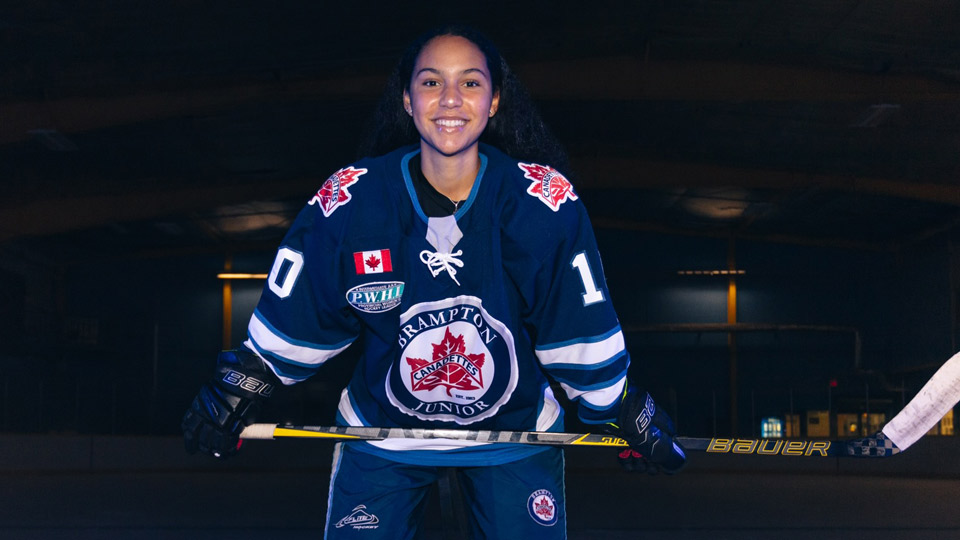 Andrea Murray
Hometown: Mississauga, Ont.
Andrea Murray
Hometown: Mississauga, Ont.
Growing up in a sports-oriented family, Murray played ringette with her sister before she decided to try playing a different sport. Her brother and father played hockey, so she followed in their footsteps and gave it a try.
“I wasn’t the greatest at it; I had to take time to get better,” the 18-year-old says. “I did skate, but I could not stick-handle or shoot, so it took some time to get good. Ever since then, I’ve been playing it and I’ve fallen in love with the game.”
One of Murray’s favourite things about playing hockey is the ability to build strong relationships with other young women.
“Hockey isn’t just a sport. You create a family dynamic, both on and off the ice,” says Murray, who plays for the Brampton Canadettes. “The bonds and friendships and the different families you get to meet at the rink is the key and the highlight of the game.”
Through BGHC, Murray has been able to expand her hockey community, particularly by meeting Black players that love the game as much as she does.
“Growing up, I didn’t really have any other Black teammates and when I did see a Black player at the rink, I almost felt some sort of comfort, as it was so nice and reassuring to see other people playing hockey who look just like me,” she says. “The Black Girl Hockey Club has allowed and exposed [me to] so many other Black hockey players from all over North America, and it’s so exciting to see where they go and where they end up.”
This fall, Murray is looking forward to continuing her hockey journey as a member of the women’s hockey team at the University of Waterloo. She also has her eyes on making Canada’s National Women’s Team and potentially representing her country at the Olympics.
“That takes a lot of hard work and dedication, and I’m willing to put all
that work in and get exposed to different teams.”

Hailey James Hometown: Brampton, Ont.
Hockey is a big part of James’ family with her father and brothers playing the game, so she was quick to get on the ice starting at four years old.
“I wanted to try it out and see if I liked it,” says James, 11.
Turns out, she loved it. Her father, Leo, began coaching her minor hockey teams as she started her hockey journey.
For James, one of the best parts about hockey is being able to play with her friends and continuously looking for opportunities to improve her game every time she hits the ice. Her motivation to always do better has translated into great leadership skills with her team, the Scarborough Sharks.
“If they are not playing their position or if they have a rough time playing their position, I usually help them out with it,” she says. “If they need help with something, I help them out… if they think they did something wrong, I make sure that they’re OK and tell them that they didn’t do anything wrong.”
When James found out that she had been awarded a BGHC scholarship, she was delighted.
“I felt excited,” she says. “I told my friends and my favourite teacher and they’re all proud of me.”
Although there are hockey connections in her immediate family, the young left-winger is also inspired by her aunt—Angela James, the first Canadian woman to earn induction into the Hockey Hall of Fame—as she paves her own path in the game. James hopes to follow in her aunt’s footsteps when she’s older by playing at a professional level and representing Team Canada.
“I have an ultimate goal and it’s to follow my aunt and try to be as
[great] as her,” James says. “She [gives me advice] all the time… to just
try your best and work hard. And if you mess up, just try again until you
get it right.”
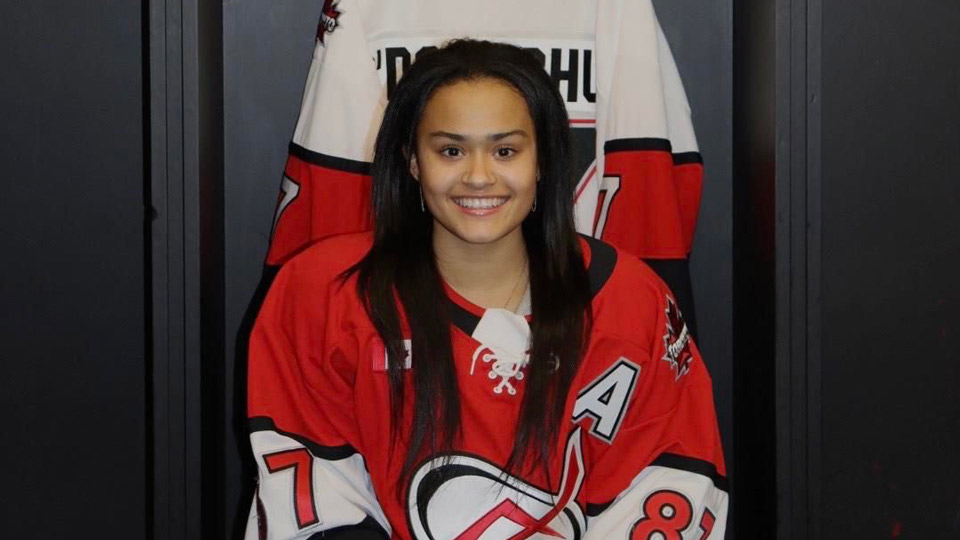
Dayton O’Donoghue Hometown: Toronto, Ont.
O’Donoghue was introduced to the sport through her mother after she signed up her older brother for hockey.
“My mom moved to Canada when she was eight years old from Jamaica and hockey was a huge part of Canadian culture,” she says. “I would just tag along as the second child to the rink, but I loved it. I was so captivated by the speed. [My brother] wasn’t able to make one of his ice times, so I jumped on instead.”
Since her first time on the ice, O’Donoghue has fallen in love with the game. Her hockey career has brought many exciting opportunities for the 16-year-old, including becoming a member of the NHL Youth Advisory Board and being a judge for the Breakaway Challenge at this year’s NHL All-Star Skills Competition.
The Toronto Jr. Aeros centre was also recently featured in Bauer’s “The Barn” campaign, where she got to share her hockey journey.
“Being able to be recognized by [Bauer] and then having them share my story on their platform, it was really validation for me that, you know what, I belong in the sport and even if there aren’t a lot of girls that play and there aren’t a lot of Black girls that play, I belong here. I’m loved in this community ,” she says.
The power of the hockey community particularly impacted O’Donoghue when her father passed away early in her hockey career. She found comfort in the support of her teammates and her love of the game.
“No matter how I walk into the arena, upset or really feeling down about my dad one day, I can always walk in and know that if I’m not feeling my best today, I have my teammates to lean on. It’s OK not to be OK.”
This is the second scholarship O’Donoghue has received from BGHC. Not only has the financial support greatly impacted her, but she was also connected into the Saroya Strong mentorship program and receives guidance and leadership from Saroya Tinker, a Team Canada alumna and Premier Hockey Federation standout.
As for the future, O’Donoghue dreams of wearing the Maple Leaf one day and has a goal to play college hockey while completing her post-secondary studies. She is also encouraged by opportunities for hockey to continue to increase its inclusivity and diversity.
“I’m really hopeful that we can continue to get more perspective into our game,” she says. “I feel that is what can make our sport even better, having different opinions and different minds and different people helping to shape our game and continuously evolve it.”
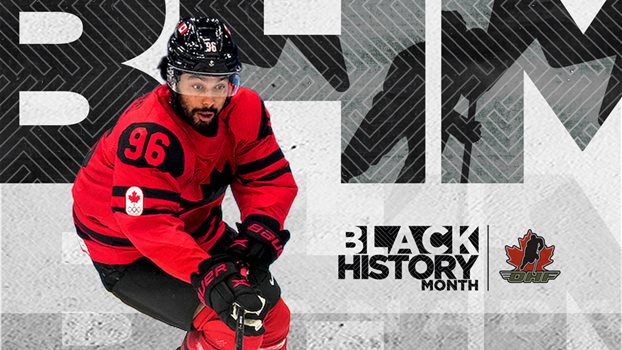
From accessibility comes opportunity
For Josh Ho-Sang, a program aimed at providing accessibility to minority families had a major impact on his journey to Canada’s Men’s Olympic
Josh Ho-Sang was born a Toronto Maple Leafs fan. An active child from the start, watching a Leafs game was one of the few ways his parents could find to hold his attention during his early years in Thornhill, Ont.
“The Leafs had a big influence on my life, just because they're such a staple in the city of Toronto,” the Men’s Olympic Team forward says. “My dad watched a fair bit of hockey when I was younger, and I used to just stare at the TV when I was little.”
From spectator to skates is the typical route for Canadian kids coming into the sport. But unlike most kids who have generations of family history and firsthand experience in the sport, Ho-Sang was the first of his family to step onto the ice.
His parents – Wayne and Ericka – both immigrated to Canada when they were young, Wayne’s family from Jamaica and Ericka’s family from Chile.
“My dad's hockey education came from strictly watching,” Ho-Sang says. “And when I started playing hockey, he started focusing on it more, just so he could give me information and knowledge on how to develop my game. The encouragement from my household was awesome.”
That support was the fuel behind his hockey career. Ho-Sang started with Goulding Park Hockey Association and worked his way through the minor hockey system, finishing up his final three seasons of AAA hockey with the renowned Toronto Marlboros program, where he was a teammate of Connor McDavid.
While Greater Toronto Area is one of the most diverse parts of the country, Ho-Sang’s teammates growing up were still predominantly white. And while Ho-Sang notes he was never fixated on diversity as a kid – pulling just as much inspiration from Mario Lemieux and Sidney Crosby as he did from Jarome Iginla and Georges Laraque – it did make his experience with the Skillz Black Aces that much more impactful.
The Black Aces, an extension of the Skillz Hockey program out of Scarborough, is an elite spring program founded by Wayne Ho-Sang and long-time Ontario hockey coach Cyril Bollers in 2008.
Cyril, whose son C.J. was a teammate of Ho-Sang, had suggested to Wayne they start a hockey team made up of kids of colour – the idea eventually became the Black Aces.
“At that point in time, we weren't thinking about racism, we weren't thinking about a lack of opportunities,” says Bollers, who sits on the board of directors of the Greater Toronto Hockey League (GTHL). “The team brought together kids of all colours, at different levels and at different ages.”
Ho-Sang was joined by the likes of NHLers Darnell Nurse and Jordan Subban, with around 80 per cent of the players being of colour, along with all of the staff behind the bench.
“That was something that inspired me when I was younger,” Ho-Sang says of his time in the program. “I think [Bollers has] done an abundance [of good] for the hockey community and trying to grow diversity. He found a way to make it affordable for us, so we could continue to play throughout the summer, but also be surrounded by kids who look like us.”
Ho-Sang stresses that accessibility to the sport is one of the biggest barriers for diversity in the game, especially for new Canadians.
“The fact that I had two immigrant parents who came here with not a whole lot and turned that into a means to allow me to play hockey while putting food on the table and having a nice warm home is incredible,” he says.
Ericka Navarro-Ho-Sang recalls how being a part of the Black Aces helped them and other families coming up through the sport, explaining, “Almost all of us were immigrants, there was maybe one or two that weren't. There was only the odd parent in the group who had actually even played hockey.
“We were all very instrumental for each other because all of our kids had the same story. You shared equipment, you shared stories, you shared food, you shared recommendations and you were there for each other.”
And that’s exactly what Bollers intended the program to be – a community in which to share information and education about a game that was new to so many families.
Fourteen years later, Ho-Sang carries the inspiration and teachings from the Black Aces as he continues to chase his hockey dream. His talent and speed made him the 28th overall pick of the New York Islanders in 2014, and he played 53 NHL games across three seasons before spending the 2020-21 season in Sweden with Örebro HK and Linköping HC.
His childhood love came full circle last fall when he attended training camp with the Maple Leafs before signing an American Hockey League contract with the Toronto Marlies.
“Toronto gave me an opportunity to reintroduce myself to the hockey world and it's been amazing,” Ho-Sang says. “To go from not having a team to representing your country in the Olympics is a crazy jump, to say the least. I'm super grateful to Hockey Canada for looking my way and taking the time to watch my game.”
And the honour of playing for Team Canada has a whole other meaning for Ho-Sang than most of his teammates: “Being a kid born from two families of immigration, it's amazing to see how my grandparents' decisions have afforded me the opportunity to represent the country that has given me so much.”
Beyond the excitement Bollers expresses for his former player, he’s optimistic about the visibility the Olympics affords.
“I think this gives an opportunity for young BIPOC (Black, Indigenous, People of Colour) players coming up, that there is a possibility that they can play in the Olympics. I think Canada just wants the best players, regardless of who they are.”
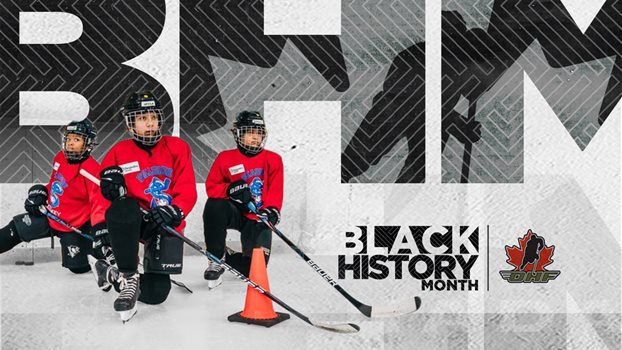
The Seaside mission
A new association in the Greater Toronto Hockey League is reaching out to underrepresented communities to let them know – hockey is for you, too
The task they set themselves was not an easy one; three Black men trying to start a hockey awakening. Make the game not only more diverse, but more open. Spread the love of hockey to kids and their families. Help everyone feel hockey culture, Canadian culture, has a place for them.
To say Kirk Brooks, his son Nathaniel Brooks and NHL alumnus Anthony Stewart have been successful in that task is an understatement. Seaside Hockey may be the first step in revolutionizing the game.
“When it came to hockey, I basically just showed up to the game to support and I didn’t even realize how different it was in terms of the race aspect,” says Seaside Hockey parent Anike Arthur. “I didn’t think anything of it until it was really in the forefront to see these kids out there who have the abilities but just weren’t given opportunities.
“Imagine how many more opportunity there would be in the sport of hockey [for Black players] if this had happened earlier.”
Kirk Brooks thinks about that a lot. The Seaside founder has been working in the game for over 30 years, hosting camps and tournaments for Black players. Seaside is dedicated to Black players as well, though Brooks says it is open to all who want to learn the game.
“We have families with Seaside … who are from a diverse background, and nobody has ever asked them whether their kids were interested in playing hockey,” Brooks explains.
“Hockey is marketed to hockey, and we need to change that.”
The concept and motto for Seaside Hockey – Breaking Through Expectations – has been slowly building over the last few years. With every racially charged incident he witnessed first-hand or watched on TV, Brooks was increasingly motivated to create an association dedicated to underserved communities. He finally put in an application with the Greater Toronto Hockey League last season and received the charter in late June 2021. Three months later, 120 players were registered and outfitted head-to-toe, even if the parents didn’t know how to dress the kids yet.
“They had volunteers there helping us lace them up properly and putting on the hockey gear,” laughs Dainah Ramsay at the recent memory. “It was like an assembly line to send them off onto the ice.
“I was like, ‘Oh my gosh, I’m holding my breath,’ as he was stepping out onto the ice.”
Ramsay’s five-year-old son, Moses, had started playing mini-sticks in the family living room during the various pandemic-related school breaks over the last two years. When she got a call from a former co-worker about a new hockey association, she sent her husband and son to look into it.
They came home busting with excitement and Moses stepped onto the ice for the first time a week later.
“We can’t explain enough how passionate Moses is,” Ramsay says. “We are commitment to growing his career through Seaside.
“I can’t say enough about them.”
Before their introduction to Seaside, neither the Ramsay nor Arthur families had much interest in organized hockey. Makio and Mikhail Arthur had tried once but didn’t take to the cold rink or early-morning practices. Now they spend the week counting the days until the next Saturday or Sunday ice session.
Arthur commends Seaside for helping her boys fall in love with the game.
“Knowing they didn’t have to be the best at it, they’re still at the learning stages,” Arthur says, explaining that the entire association has been focused on skill development and skating skills through the first portion of the season.
“It’s not competitive at all, it’s more encouraging.”
Brooks expects Seaside Hockey will continue to grow, saying it could have 200 kids playing this season, but additional support is needed to ensure it can outfit any registrant who needs it. All to ensure not only the player is supported in their hockey journey, but also the whole family.
“If you're an immigrant to Canada or … minority of any color, we want to let you know that this game is for you … it’s a beautiful game,” Brooks says. “We just want more kids to be able to play the game which has always been my mission.
“More kids playing the game.”
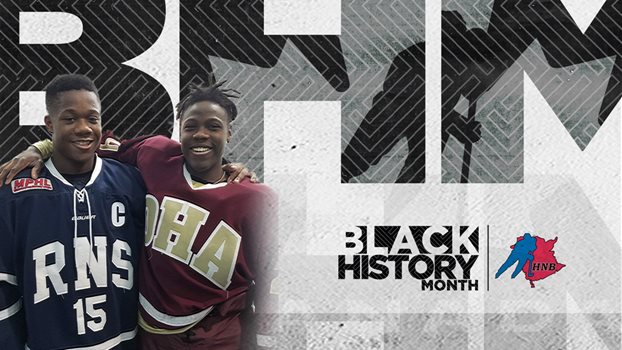
Haitians, hockey and heart
Adopted from Haiti, Sam and Venel Campbell’s hockey stories are oh so Canadian – a frozen pond, a family connection and a pure and simple love for the game
Jeff Campbell describes the competition as constant.
Pretty much every aspect of life can be turned into a competition for Sam and Venel Campbell.
Who can tie their shoes quickest. Who can eat the most at dinner. It goes on and on.
“It has been like that from the get-go. It started with who could get their seatbelt on in their child seat first in the car. It’s everything,” Jeff says with a laugh from his home in Keswick Ridge, N.B. “They’re both very competitive. There’s no peace when they’re around. Even at 18 and 19 years old, it’s who lifted more weight in the gym today, who went to the gym more, who ran farther – they’re constantly able to push each other. And they’re each other’s best friend, too. With two boys, that’s to be expected.
“One thing that has been clear during the pandemic is having each other has been very helpful. They have pushed each other, trained each other and they’ve had each other. A lot of young athletes or people in general have been alone and haven’t been able to see their friends. They have a built-in best friend even though they have their own friends as well.”
Sam and Venel are your typical Canadian boys in many ways. They grew up in a small town, were handed hockey sticks and skates at a young age, learned to skate on a pond behind their house and fell in love with the game.
The Campbell boys played minor hockey from U7 through to their U15 years, and continue to climb the ranks, with the brothers now playing Junior A in the Maritime Hockey League, Sam a member of the South Shore Lumberjacks and Venel with the Pictou County Crushers. Hockey has been a major part of their lives for as long as they can remember.
But this Canadian hockey tale is different than many others as well. Sam and Venel were born in Haiti, abandoned as young children before being adopted by Jeff and his wife Colleen O’Connell and brought to Canada when Sam was four years old and Venel was three.
Jeff Campbell, from the world of IT, and O’Connell, a rehabilitation professional, started a non-profit organization called Team Canada Healing Hands in 2002, which provides education and training for persons with disabilities and rehabilitation medicine in areas of low resource. The organization, which is celebrating its 20th anniversary this year, started by working in Haiti but now aids people in various countries around the world, with more than 500 volunteer medical rehabilitation professionals lending support.
During one of the group’s early trips to Haiti, Colleen heard that Sam had been abandoned at the general hospital in Port-au-Prince and, upon learning more of his story, she and Jeff started the process to adopt Sam. They later adopted Venel and the family of four started its life in New Brunswick.
Hockey was the perfect introduction to Canada for the boys.
“We live out in the country, so we have a lot of land and there’s a pond area in the back,” Sam says. “We would go out there, skate. At that time, that’s the first time we had seen snow or ice so that was very new, and we fell in love with it right away. We would get our skates strapped on and learn to skate on the back pond. I would have started playing organized hockey around six or seven [years old] in our little community of Keswick Ridge.”
Sam was the first to start playing minor hockey. But like many little brothers, Venel wasn’t too far behind.
“I fell in love with the game of hockey so quickly,” Venel says. “I got my first pair of skates when I was about four or five and would skate on the pond. I would always watch my brother play hockey and I loved watching him play and wanted to play so bad. They let me play the next year and I fell in love with the game.”
The boys practiced, pushed each other and became good hockey players. Being one year apart in age, they played in the same division every other year. One season that stands out for both of them was U13, when the Campbell brothers both cracked the AAA Express in Fredericton. They were able to go to the rink together, practice and play on the same team and, as an added bonus, Jeff was the coach.
Colleen, a swimmer, and Jeff, a hockey player, grew up in athletic families. They learned the value of team sport and are pleased to now see what hockey and sport has given to Sam and Venel.
“What it’s really taught them or supported them with is confidence. Venel, particularly, has been extremely small his whole life. When he came to Canada at three-and-a-half years old, he was only 23 pounds but, when you watch him skate, no one sees how small he is,” says Colleen. “It’s enabled them to have a confidence in their own selves. And it’s also taught them about the ups and downs of life. You lose a game or you don’t make a team or you’re not picked to be the award winner, that’s what life is like. It’s also enabled them as they’ve gotten older to [learn] about responsibility. It’s instilled this good sense of taking responsibility for your fitness, your participation, your attitude. It’s helped them learn to deal with different types of personalities.
“We have kids who can do their own laundry, they can order in a restaurant, they know how to behave when they travel, they know how to interact and talk to adults. These are all things they have got to learn by being in the sports and team world, which are hugely important.”
The Campbell boys are extremely grateful for the lives they have in Canada. But Haiti will always be in their hearts. The family has taken two trips to Haiti over the years, with additional visits planned for the future. And with Sam and Venel entering adulthood – both are studying as well as playing hockey, with Sam at the University of New Brunswick and Venel at St. Francis Xavier University – the boys would love to get more involved in Healing Hands and helping out their home country.
“When I was younger, we went back to Haiti and we were able to help all of these kids there and we were able to give clothes and read them stories,” Venel says. “It felt like I belonged where I was at. It was nice to give back to the country where I came from. I always feel like in the future, that I’ll have some importance and I’ll do something for Haiti. It is my home and it’s where I came from, I can’t really forget about it. I just want the country to be better, and anything I can do to help revive that would be awesome.”
At the centre of the Campbell family is love. Love for the game of hockey, love for Haiti and Canada, love for each other. That love is evident when you ask Sam and Venel about their relationship with their parents.
“They are the best. I have no other words to describe them. Without them, we wouldn’t be here; they have given us such a better and fortunate life, basically saved our lives,” Sam says.
Adds Venel: “As the years went by, we just grew closer together as a family. It’s not just me and my brother who are competitive, my whole family is competitive. We all want to do the best and we all want the best for each other. I can’t thank my parents enough for what they’ve done for me, all the money and time they’ve put into my education and hockey and everything that let me be the guy I am today.”
For more information: |
- <
- >
















